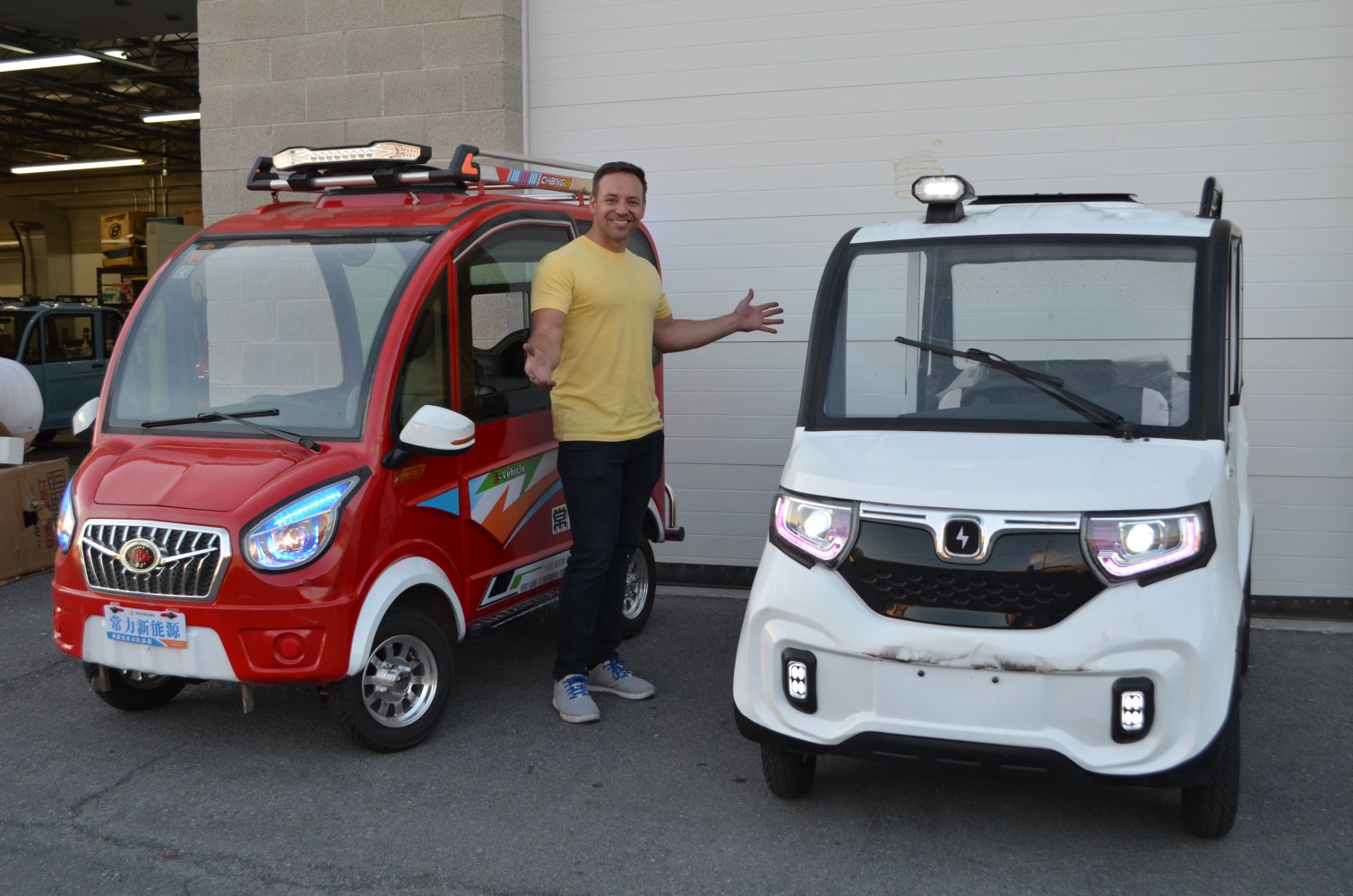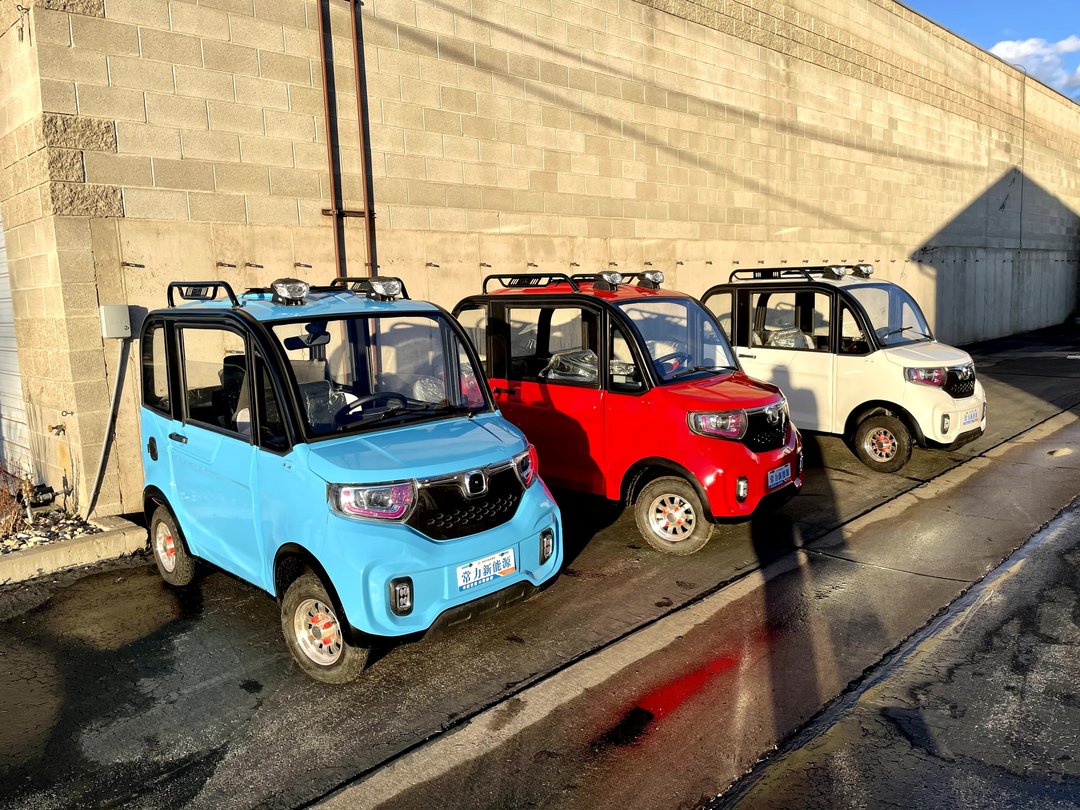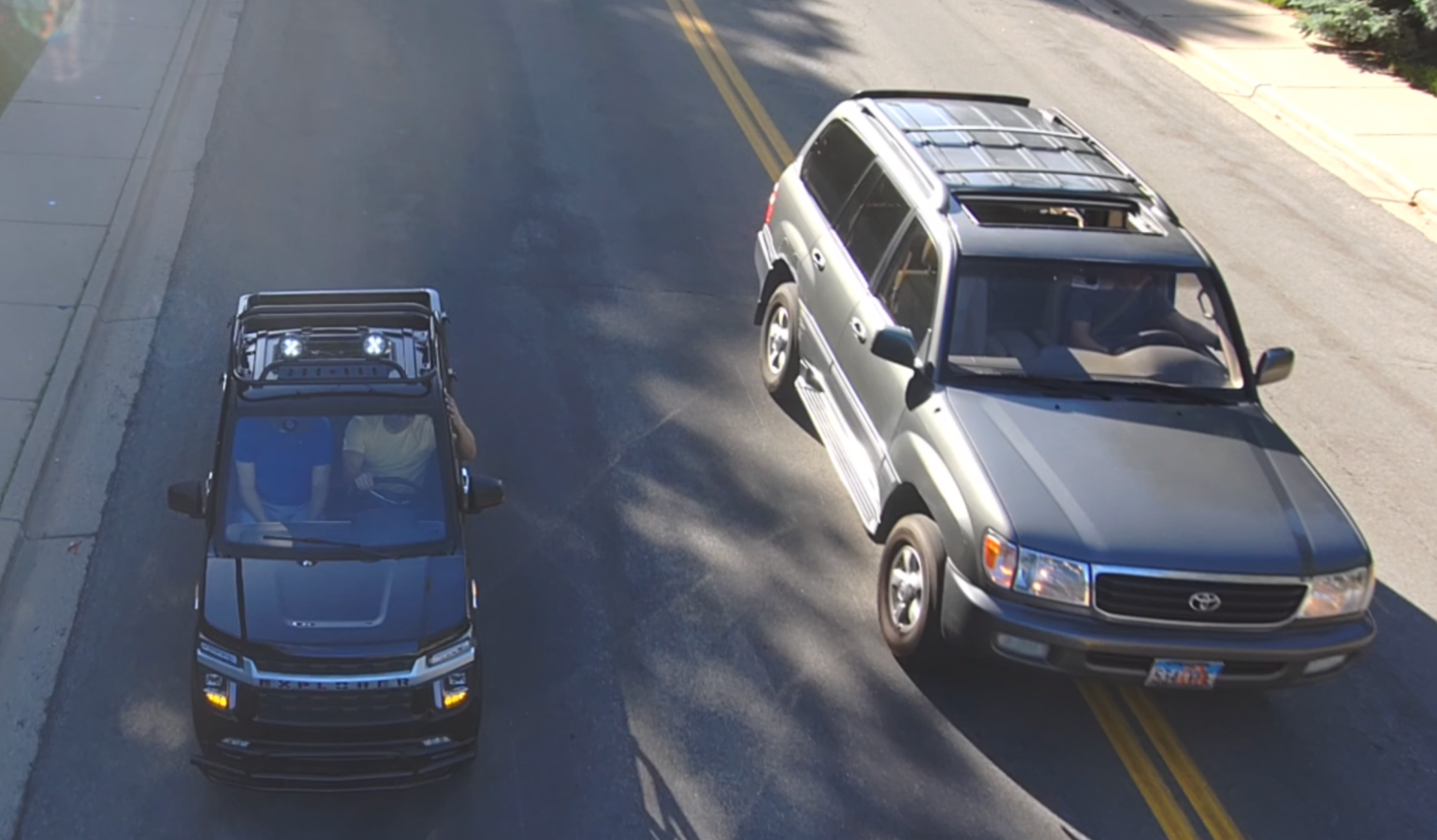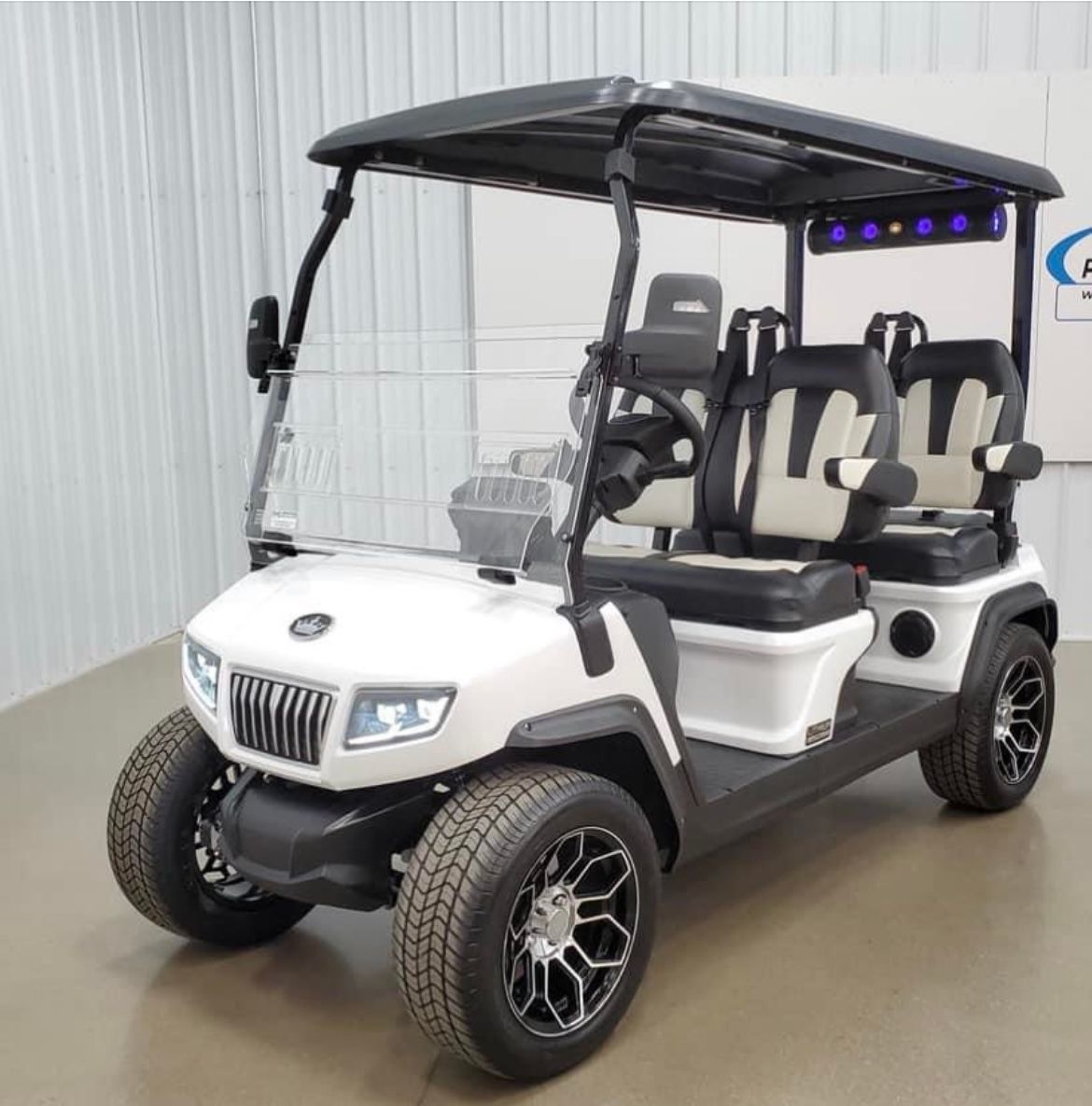
Posted on 12/08/2023 12:43:56 PM PST by Red Badger

Electrek was invited to try out the cheapest EV in the world, which is manufactured by Changli. It was hilarious, cute, “cheap” in every way, and a wild exercise for the imagination. Even though it doesn’t retain its famed price tag, the US importers have put great effort into adding back value where the shipping costs took it away.
Changli manufactures these vehicles in China to be used as taxis and personal transportation. Vehicles like these are used by urban-dwelling workers to get around a dense landscape. Working people in China are attracted to them for one principle reason: These cars are cheap.
We’re talking lead-acid batteries, the cheapest plastic dashboard you’ve ever seen, stickers instead of fog lights, and steering that I would describe as having a learning curve.
It goes without saying that you won’t find a tech-heavy interior with a software-driven experience like we’ve seen from forward-thinking automakers. The Changlis are brass tacks basic, which has a certain appeal.

Changli comes to America Electric Import Motors (EIM), importers of these cheap micro cars, got into the business as a joke. After seeing an article about the cheapest EV in the world, EIM put its prior experience in shipping and logistics to use and sourced its first car. Changli vehicles hit the news over a year ago when news outlets headlined the $900 price tag. True, it was $900 before the current global shipping problems and if it’s bought in China, but shipping and associated costs make up the majority of the “real” price for anyone outside of China (as fellow Electrek writer Micah Toll found out when he purchased one from China). The first EIM order prompted another order of a few tailored cars for the US market. Without an ounce of marketing, those were sold almost instantly.

An earlier batch of American Changli Now the joke has some serious legs. Despite the increased shipping price, EIM has sold several containers’ worth of cars by now and pre-sold them for about six months. So, what’s the big deal? Why are these tricked-out grocery carts so popular?

What really makes these so fun and unique is the cost and the size. The most obvious comparison in size and scale is a golf cart. In the good old days before the pandemic, a golf cart would start at around $7,000 to $8,000 without windows, doors, heater, etc. On the other end of the chasm is a full-sized car. Electric cars are great. At Electrek, we live and breathe them every day, but our favorite full-blown EVs can be expensive and overkill for simple uses.

Truck compared to a Toyota Land Cruiser
How to get a Changli vehicle in the US
The “Grunt” car can go about 20 miles on a charge and do roughly 25 mph. This is a great option for running around town, grocery trips, post office runs, or other short trips on slow roads. It can seat two adults in the front and two kids in the back.
With the “Pak Yak” truck, like Micah bought, the larger battery and motor setup allows it to go further, faster, and of course, to haul more. You can expect about 40 miles of range, and a top speed of 35 mph. This opens doors to even more possibilities, such as moving lawn debris, hauling car parts, or even moving (very small) pieces of furniture. The Pak Yak truck can seat two adults.
Keep in mind that Changli vehicles are not homologated for on-road use in the US and do not meet the required Federal Motor Vehicle Safety Standards for their class of motor vehicle. Thus, they are not street legal in most areas of the country.
We had a chance to sit down with Caleb Nelson, founder of Electric Import Motors.
Changli’s US price
VIDEO AT LINK............
So, as a one-stop-shop, EIM now imports the cars to provide customers with one easy-to-understand cost. A base model car costs $6,500, while a truck will run you $8,500. Shipping to your door could run around $800, possibly less. As of writing this article, we are still in the midst of the global pandemic, and rippling shipping industry chaos. The shipping raising the cost of soup, nuts, and Changlis hasn’t stopped the American buyer – as Nelson points out, containers are still selling out.
EIM aims to add value to the equation by taking care of all the necessary paperwork and ensuring safe and proper delivery of the cars during each step of the journey. Completing the proper paperwork is key, as Uncle Sam’s punitive fees can explode into hefty fines when done improperly. Since EIM is importing entire containers at a time, the company can ensure that no other cargo is shipped inside, which risks damage, and EIM inspects the vehicles before the final US shipment.
For now, this pet business is still importing, and they are sold out for about six months from now. If the market continues to pine for small EVs, we might see other makes and models on American roads very soon.

Under the tilting truck bed: lead-acid batteries
Electrek’s Take
There are quite a number of micro-cars and personal mobility items that fit a particular niche, but with the exception of electric bikes, none of them have really become mainstream. I think the primary reason is quirkiness and value proposition.
The EIM Grunt and Pak Yak were so much fun to drive that it was like being a kid again. It was so small and quirky that I was grinning from ear to ear the whole time. People were looking and staring, and several stopped us to ask about the vehicle and its origins. Some people really like being the center of attention and enjoy showcasing a new way to look at transportation (actually, a lot of us at Electrek are that way), but that’s not a common personality trait in the real world.
If the Changli vehicles were $900 in the US, they would be on every street in America. At that point it wouldn’t be rare anymore, it wouldn’t be strange or quirky. It would just be normal.
Since these cars have a higher price, they will primarily be in the hands of green-tech extroverts that will make a big show about their oddball purchase.
Biden Mobile for residents of Bidenville.
Top speed 25MPH. I live on a straight part of a rural state highway where people drive from 50 slowest to almost 100.
I’d risk my life every time I drove off my property.
Montana will licence virtually anything with four wheels as a quadcycle legal for street use on all nonfederal highway roads. They do for side by sides and other small vehicles such as Kei trucks. Due to state reciprocity clauses for licence plates and motor vehicles any vehicle licenced in one state must be allowed to operate in every other state in it’s originally licenced capacity. This is 100% a federal constitutional level equal protection clause rule.
Montana will grant out LLCs to any US citizen and will title and licence with no instate inspection any vehicle with a valid VIN or manufacture number. Montana LLC Licence plates are for life as well. This is how we Texans get around Texas DPS refusing to title or plate side-by-sides for road use even though they run 80+mph. my Ute has Montana plates via a $49 per year Montana LLC agent. Got pulled over once and said this is a registered commercial vehicle operating under a business while protected by the commerce clause and equal protection clause. He didn’t even radio back just walked away with a have a good day air.
Somehow it reminds me of even LESS than a Yugo.
Bk
I took my 1995 Ford F150 and traded it in for a brand new Hyundai Accent courtesy of the Obama Cash for Clunkers. Told them I just want air and an AM/FM radio. Got a brand new car for $5k with a stick & roll up windows.
No way. I. don’t want to be fined for starting a forest fire.
So registering in Montana as a business vehicle can make it street legal on non-federal roads. Maybe not street smart, but street legal.
So who is going to commercially insure a go-cart that is driving on a state highway?
Insurance companies have been known to fight these battles.
I was a slot car fan when I was a kid. The oldest HO scale slot cars that I knew of were the Aurora “vibrator” cars. They had a coil with a rod in the middle. When the coil was energized from the track rails, the rod would clang up and down like a piston, hitting a plate which turned the wheels. They were very slow and extremely noisy. I still have a few of them tucked away in a box in the attic. Never understood why they were made - were rotating electric motors not invented yet?
Except for the noise, these remind me of those.
A car built for a roll-over.
Will big rig drivers be required to have a prying tool so that they can remove these from their grills and tires?
May bring back this fad;
https://www.washingtonpost.com/news/dr-gridlock/wp/2015/11/10/car-tipping-oh-the-humanity/
Euros had more fun with it;
https://www.dutchamsterdam.nl/707-amsterdam-smart-car-canals
But there are plants with multiple buildings which may occasionally go outdoors between buildings.
The carbon footprint of an American hospital visit is the big one. On a per-mile basis, the carbon footprint of a bicycle is much higher than an SUV if the medical costs are properly accounted for.
There are limited areas/towns/cities that allow golf carts on the streets. And some gated communities with private roads. Mine does not for instance, on the latter.
For the longest time, at least a couple decades, there was an X 1/9 about 35’ in the air on top of an 18” steel post on I-20 east of Atlanta. Sadly, I think it’s gone now.
😀
I bought an LSV recently, this one, an Evolution D5 Ranger, about $12,000:

It's great as a golf cart to drive around private communities and beachside roads, but it is useless past that.
The Ranger has a backup camera, hands free phone, LED lighting, trunk/cooler, seatbelts, and easily gets 35 miles on a several hour charge using only a standard 120 volt plug. It uses a LiFePO4 battery, the battery that doesn't catch fire. It is way past most golf carts, but it is still just an LSV.
I’m holding off for the orgasmatron.
I agree. It is nothing more than a quadcyle with protection against the weather.
But.....for most of the world it is a major and *affordable* improvement over having the family hanging off the back of a motorized scooter. For a small segment in the U.S. it may also be the perfect solution.
I have an electric-assist tricycle. I take it to my university classes which are few miles from my home. I use it regardless of the weather. Only twice last year was the snow so deep that I used a car. I park the trike directly in front of the university building’s door. The savings in university car parking fees has more than paid for the trike.
When I retired, I enrolled in our local community college and then moved over to the university. I can ride a bike, but I don’t trust my reflexes to prevent a fall on bike. The trike makes cycling possible for me...and...I *love* my trike!
Hmmm?.....Good point!
Disclaimer: Opinions posted on Free Republic are those of the individual posters and do not necessarily represent the opinion of Free Republic or its management. All materials posted herein are protected by copyright law and the exemption for fair use of copyrighted works.